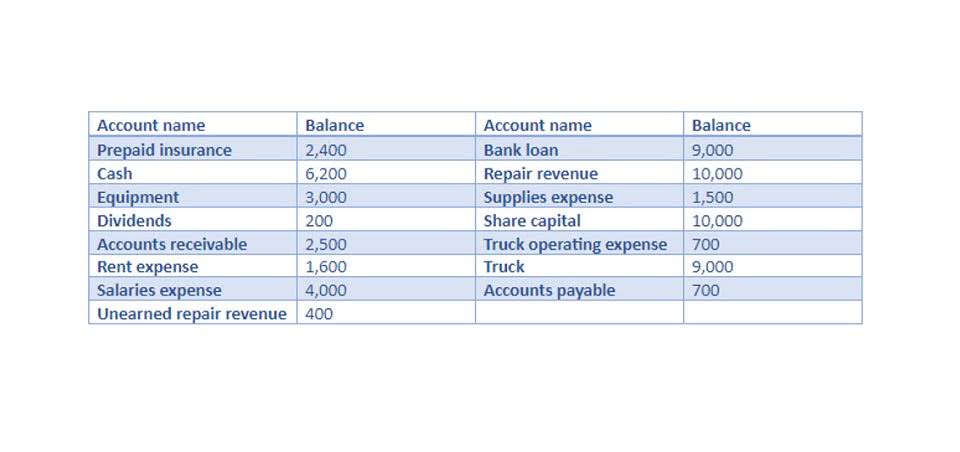
Delayed payments can strain a company’s cash flow, potentially impacting its ability to meet obligations. To address this, companies often use strategies such as early payment discounts or stricter credit policies. For example, offering a 2% discount for payments made within 10 days (2/10, net 30) incentivizes faster payments, improving cash flow and positively impacting NWC. Monitoring the accounts receivable turnover ratio, which measures how efficiently receivables are collected, provides additional insight into credit management effectiveness. Net working capital is mainly affected by changes in current assets and current liabilities.
- Gain real-time visibility into cash positions to maximize liquidity and working capital efficiency.
- By this definition, current assets would include cash and any cash equivalents, such as marketable securities, as well as accounts receivable and inventory.
- Conversely, a company with negative working capital may face challenges in managing day-to-day expenses, which could signal financial stress.
- In any acquisition, a buyer will want to know how much working capital is required to sustain current operations.
- Inventory, comprising raw materials, work-in-progress, and finished goods, is also a current asset, as it is expected to be sold within the operating cycle.
- Tracking it is key, since you need to know that you have enough cash at your fingertips to cover your costs and drive your business forward.
Current assets
An increase Mental Health Billing in a current asset represents a cash outflow, while a decrease is a cash inflow. Conversely, an increase in a current liability is a cash inflow, while a decrease is a cash outflow. The amount of working capital tied up in current assets and liabilities impacts liquidity, as these items are typically converted into cash within one year.
Global Payments Trends 2025: Wallets, AI & CBDCs

While a decrease can be a sign of financial strain, it could also reflect efficient capital management, such as managing inventory levels or accelerating accounts receivable collections. Monitoring these changes over multiple periods helps in assessing financial stability and operational efficiency. Working capital is calculated using the assets and liabilities listed on a corporation’s balance sheet, with a focus on immediate debts and assets that can be converted to cash within a short period. Calculating working capital provides insight into a company’s short-term liquidity. A company with positive working capital generally has the potential to invest in growth and expansion. But if current assets are exceeded by current liabilities, the company has negative working capital and may face difficulties in growth, paying back creditors, or even avoiding bankruptcy.

Financial reporting
A higher ratio indicates prompt payments, while a lower ratio may suggest potential cash flow issues. Under International Financial Reporting Standards (IFRS), accounts payable are recognized at fair value, ensuring financial statements accurately reflect obligations. Working capital is calculated by taking a company’s current assets and deducting current liabilities. For instance, if a company has current assets of $100,000 and current liabilities of $80,000, then its working capital would be $20,000.

Both figures can be found in public companies’ publicly disclosed financial statements. The most https://millionhits.net.au/amssurfaces/law-firm-accounting-services-bookkeeping-cpa-in/ common examples of operating current assets include accounts receivable (A/R), inventory, and prepaid expenses. The income statement, unlike the balance sheet, summarizes a company’s financial performance over a period, such as a quarter or a year, detailing its revenues, expenses, and ultimately its profit or loss.

How to Calculate Changes in Net Working Capital
Amounts are in millions, and the final column shows the last twelve months’ (LTM) average. Explore the essentials of Net Working Capital in finance, its calculation, components, and its critical role in assessing liquidity and financing options. Now that we’re done with the net working capital calculation, let’s learn how to use this ratio to evaluate a company’s financial performance. By providing you with a simple and easily evaluated number, the working capital ratio lets you conveniently compare an organization’s working capital between operating periods, and against that of other companies.

Order to Cash
Without capital, you can’t hire employees, pay your bills, or even stay in business. We’ve all heard the slogan ‘it takes money to make money.’ That’s what capital is. The suppliers, who haven’t yet been paid, are unwilling to provide additional credit or demand even less favorable terms. There is much negotiation that occurs between the buyer and seller in M&A, including conditional clauses, surrounding the topic of the working capital peg (or “target”). On the subject how to calculate nwc of modeling working capital in a financial model, the primary challenge is determining the operating drivers that must be attached to each working capital line item. Let us understand the formula that shall act as a basis for us to understand the intricacies of the concept and its related factors.
- Pvt Ltd has the following current assets and liabilities on its balance sheet dated 31st December 2019.
- How do we record working capital in the financial statementse.g I borrowed 200,000.00 Short term long to pay salaries and other expenses.
- The quick ratio—or “acid test ratio”—is a closely related metric that isolates only the most liquid assets, such as cash and receivables, to gauge liquidity risk.
- For example, negotiating extended payment terms allows companies to generate revenue from sales before settling obligations.
It provides insights into a company’s ability to cover its short-term obligations and invest in its daily operations. A zero change in net working capital implies the balance between current assets and liabilities remained consistent. This occurs if current assets and liabilities increase or decrease by the same amount, or remain unchanged. While zero working capital might seem neutral, it can indicate current assets are fully funded by current liabilities, posing risks if assets are not easily convertible to cash when liabilities are due. These changes are important for understanding a company’s operational cash flow and its ability to manage daily expenses.